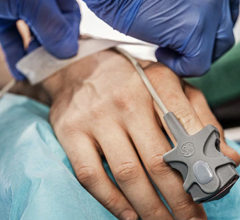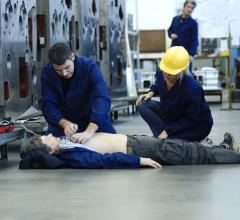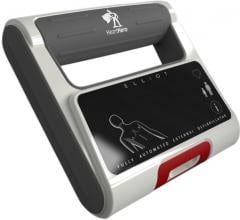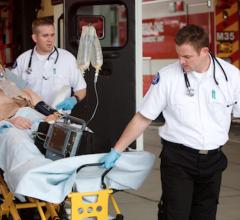
Bruce Wilkoff, M.D., director of cardiac pacing and tachyarrhythmic devices at the Cleveland Clinic.
Choosing the right device to regulate or jump-start the heart can be a challenge. Not only does a patient’s symptoms often dictate whether a pacemaker or defibrillator is a more appropriate treatment, but new advances in technology are making the choice between available devices more difficult. In addition, an on-going study is fueling the debate as to the efficacy of biventricular pacing as a preventive measure in those who may, in time, suffer heart failure.
Defining parameters
It wasn’t long ago that patients’ options were limited to a single-chamber pacemaker that does little more than regulate the heart beat. These devices have only two leads — one going to the right atrium and one to the right ventricle. Building on that technology, researchers have been able to develop dual-chamber pacemakers with three leads and devices that combine the actions of a pacemaker with those of a defibrillator.
Of the two major classes of devices, CRTs and implantable cardioverter-defibrillators (ICDs), most of those in the cardiac resynchronization therapy (CRT) group, are now dual-chamber pacemakers that can pace both the right and left ventricles because of where the leads are placed. CRT devices use one lead in the right atrium and one in the right ventricle, which paces the right ventricle. But since it is placed along the septum, it also paces the septal wall of the left ventricle. And there’s one lead in the coronary sinus, which goes to the left lateral wall of the left ventricle. In this manner, the right-most and left-most walls of the left ventricle are paced simultaneously.
According to James Coman, M.D., an electrophysiologist at the Heart Rhythm Institute of Oklahoma, although most patients no longer get CRT-Ps, which is a CRT that can act as a standard pacemaker and its sole purpose is resynchronization, there are a few exceptions. A 90-year-old patient, who has shortness of breath and heart failure may only ask the cardiologist to “make me feel better,” Dr. Coman said. If this patient is presented with all the options and still says he is only looking to improve his quality of life for the short time he knows he has left, Dr. Coman said, “For this patient, a CRT-P would be a good choice.”
In about 98 percent of the case in the U.S., the biventricular pacemakers now being implanted are CRT-Ds, indicated Bruce Wilkoff, M.D., director of cardiac pacing and tachyarrhythmic devices at the Cleveland Clinic. A CRT-D is an ICD, an implantable cardioverter-defibrillators with CRT features (resynchronization). But they are a challenge to implant, he says, because of the difficulty often encountered in getting the left ventricular lead in place.
“It’s an unforgiving location and can add about 50 minutes to the procedure,” he said.
There also is an increased risk of infection, Dr. Wilkoff added.
For patients who need only an ICD, there are univentricular and biventricular ICDs. However, the number of patients getting biventricular ICDs is on the rise. Dr. Wilkoff said the Cleveland Clinic does about 900 to 1,000 defibrillator implants a year, and about 400 of these are biventricular ICDs.
Cost seems to be one factor, he says. While a biventricular ICD still runs between $20,000 to $30,000, the costs have been coming down. Another reason biventricular ICDs may be getting more popular is a proven track record in clinical trials.
The DATAS study
In June 2006, the results of a European study showed that dual-chamber implantable cardioverter-defibrillators (DC ICDs) were better in reducing clinically significant adverse events compared to single-chamber (SC ICDs) for patients with a standard ICD indication.
Presented at Cardiostim 2006, the 15th World Congress in Cardiac Electrophysiology and Cardiac Techniques, the Dual Chamber & Atrial Tachyarrhythmias Adverse Events Study (DATAS) showed that clinically significant adverse events can be reduced by one-third with dual-chamber ICDs (CD ICD) compared to single-chamber ICDs (SC ICD) in patients at risk for sudden cardiac death.
The randomized, multicenter study, which was sponsored by Medtronic and which involved 334 at-risk patients, showed a 33 percent reduction in the rate of adverse events documented in the DC ICD group by the clinically significant adverse events (CSAE) score. After 17 months, annual mortality was 2.7 percent in the DC ICD group and 6.8 percent in patients treated with a single-chamber ICD.
In addition, inappropriate shocks were registered in only 1.3 percent of patients per year of follow-up with DC ICDs versus 6.8 percent of those with SC ICDs.
At the presentation of the results, Jesus Almendral, M.D., of the department of cardiology at Hospital General Universitario Gregorio Maranon in Madrid, Spain — who also was a member of the DATAS study steering committee — said, “By monitoring both the atrium and ventricle in the heart, DC ICDs can diagnose the nature of the arrhythmia and distinguish atrial from ventricular tachyarrhythmias, or the loss of synchrony between the two chambers. This is very important to administer the most suitable therapy to reset the heart rhythm.”
The study showed that single-chamber ICDs sense bradycardia and detect arrhythmias in the right ventricle only and pace that ventricle at a fixed rate, which may result in incomplete sensing and therapy in some patients. And because they do not monitor both chambers, they are more likely to deliver inadequate therapy. On the other hand, because dual-chamber ICDs monitor the right atrium and the right ventricle, they can defibrillate the ventricle and pace both the atrium and the ventricle in atrio-ventricular synchrony.
New developments
The expansion of device functions has resulted in three leads, and now there may be a device with four. According to Dr. Coman, research is now under way to develop an ICD that uses four leads: one in the atrium and three in the lower chambers. One lead, he says, would be placed on the wall shared by the left and right ventricles; one on the back wall, and one on the front wall. Although human trials are still a ways off, “animal-level research shows good results,” Dr. Coman said.
Improvements also are being made to leads, says Dr. Wilkoff. “Biventricular pacing is highly dependent on the leads you use and the tools you use. Most of the technical development is making it easier to insert the leads,” he explained.
Newer leads have more electrodes on them and improvements to the sheath and shape make them easier to get into tight spaces, he says.
And the devices themselves are getting smaller and lighter. Arjun Sharma, M.D., FACC, vice president, Patient Safety - Cardiac Rhythm Management, Boston Scientific Corp., said the typical pacemaker weighs less than 20 grams, while defibrillators weigh between 50 and 60 grams and are about 12 mm thick.
Dr. Sharma also said today’s batteries last longer. “Some batteries can last 10 to 15 years, depending on the amount of pacing. Defibrillator batteries last about five years.”
Manufacturers also have become more aware of the shape of devices, says Dr. Coman. While Medtronic’s implantable devices are square, Boston Scientific and St. Jude Medical Inc. have opted for ovals, which he says may be better for patients who are small and frail or those who are obese.
Remote monitoring
Aside from developments in CRTs and ICDs, great strides have been made in monitoring systems. Although some systems still use a wand transceiver, the advent of radiofrequency (RF) wireless monitoring allows patient data to be collected, sent to a base station up to 10 yards away and then uploaded over a telephone’s land line to a Web site where the physician can access and evaluate the data.
Dr. Coman said these new monitoring systems also have built-in alerts so the physician can set specific parameters for each patient. And Dr. Wilkoff says that as monitoring systems have gotten more sophisticated, more information than just that pertaining to the heart’s function can be collected. By adding a BP cuff and a digital scale, the patient’s blood pressure and weight also can be sent to the physician.
Plus, he says that at the Cleveland Clinic, all data collected and sent are automatically integrated into the patient’s electronic medical record. Dr. Sharma said another benefit of the wireless system is that patients can monitor themselves even when they are traveling. As an example of the new breed of monitoring systems, Dr. Sharma pointed to Boston Scientific’s LATITUDE Patient Management System, which received FDA approval in September 2005. The LATITUDE home monitoring system supports nearly all models in the PRIZM and VITALITY families of ICDs and the RENEWAL family of CRT-Ds. Patients with nonwireless devices are now be able to benefit from the convenience of remote follow-ups and the knowledge that both their heart failure and device status can be monitored while they are home.
St. Jude Medical also announced in September 2007 that the FDA had approved its first family of radiofrequency wireless monitoring systems. Promote RF CRT-D and Current RF ICD feature RF telemetry for wandless communication with programmers that are used by physicians to interrogate and program devices.
The systems use a dedicated range of frequencies designated for medical devices called the MICS (Medical Implant Communications Service) frequency band, which helps prevent interference from other electronic signals. The company also says the Promote RF CRT-D allows physicians to electronically reconfigure left ventricular leads to help optimize the device’s pacing performance without having to physically reposition the lead. In addition, these devices are said to feature the Ventricular Intrinsic Preference (VIP) algorithm that is designed to allow the patient’s own heart rhythm to prevail when possible, by actively monitoring the heart on a beat-by-beat basis to provide pacing only when needed.
A question of prevention
A European study, the start of which was announced in 2007, may pave the way for the use of CRTs as a preventive therapy. Called PREVENT-HF, the randomized, multicenter study is being conducted at five centers in Spain, four in Italy and seven in Germany. In a published report detailing the study’s design and implementation, the investigators said that right ventricular pacing has been shown to cause heart failure symptoms in patients with and without previous systolic left ventricular dysfunction. So the aim of this study is to evaluate the preventive effect of biventricular pacing versus RV apical pacing in patients with indication for permanent ventricular pacing.
Additionally, they hope to determine whether using biventricular pacing in patients with atrioventricular block will result in a significant difference in LV end diastolic volume after one year when compared with conventional RV apical pacing.
The investigators cite numerous studies to support further research, saying, “Now there is convincing evidence from several randomized controlled multicenter trials that biventricular pacing improves symptoms and prognosis when severe systolic dysfunction accompanies symptomatic heart failure in the presence of delayed ventricular activation.”
But they also said: “Reliable data on the purely preventive effectiveness of primary biventricular pacing for AV block in terms of LV remodeling or clinical outcome are still lacking to date. Indeed, the present clinical trials literature supports biventricular pacing as superior to RV apical pacing in patients with a prolonged QRS that have symptomatic HF and severely reduced systolic LV function. Whether there are physiological, functional, neuroendocrine or clinical benefits to biventricular pacing in patients without severe systolic dysfunction and heart failure who undergo routine pacemaker implantation, however, is unknown. These are the questions that PREVENT-HF seeks to address.”
Sponsored by a grant from Medtronic, patients will receive a conventional Medtronic dual-chamber pacemaker (Kappa 700) with the ventricular lead in the RV apex, or a biventricular, dual-chamber pacemaker (InSync 8040 or InSync III 8042) with leads at the RV apex and the left ventricle. Dr. Coman believes this study may break new ground in preventing heart failure. “There has been early evidence that if we pace ventricles from both sides, it slows down the rate of development of symptoms,” he said. Yet he asked, “When is the right time to engage this therapy?”
Acknowledging the current protocol for the implantation of CRTs and ICDs, Dr. Coman said, “You have to be severely symptomatic before we are allowed to put one of these devices in you.” But he wonders whether implanting one of these devices in a patient prior to the onset of severe symptoms would “prevent him from getting symptoms of heart failure down the road.”
Hopefully, the PREVENT-HF study will answer these questions.


 July 28, 2023
July 28, 2023 








